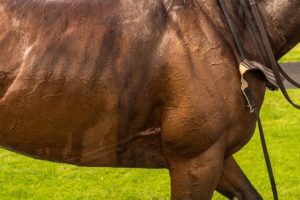Can Minella Indo defend the Cheltenham Gold Cup?
Rachael Blackmore took most of the headlines at the 2021 Cheltenham Festival, becoming the first woman to win the Champion Hurdle, on Honeysuckle, and the first woman to win the Ruby Walsh Trophy, presented to the leading jockey at the meeting. However, in the ‘Blue Riband’ event itself, the Cheltenham Gold Cup, Blackmore and her mount, A Plus Tard, were usurped by lesser-fancied stablemate Minella Indo, ridden by Jack Kennedy, who stayed on gamely to win by 1¼ lengths.
In fairness, Minella Indo had looked a desperately unlucky loser in the 2020 RSA Insurance Novices’ Chase at the 2020 Cheltenham Festival, where he was unable to withstand an extraordinary finishing effort from Champ, who made up fully 8½ lengths from the final fence. After two easy wins at Wexford and Navan at the start of the 2020/21 season, Minella Indo had fallen before halfway in the Savills Chase and finished only fourth of five in the Paddy Power Irish Gold Cup, both at Leopardstown, en route to the Cheltenham Festival.
However, the form of his Cheltenham Gold Cup win looks pretty solid, with previous dual winner Al Boum Photo only third, beaten 5½ lengths, and a yawning 24-length gap back to the 2018 winner, Native River, in fourth place. Minella Indo has done all his winning on good to soft, or softer, going, so unseasonably warm weather would not be in his favour. That would appear to be his only negative and, while he has the feted novice Monkfish to contend with this time around, he fully deserves his position at the head of the ante-post market.
 Generally speaking, sweating in racehorses is a good sign insofar as it helps to regulate body temperature. The evaporation of sweat, which is 90% water, creates a cooling effect, known as evaporative cooling, which lowers the body temperature. Of course, racehorses have a thick, waterproof, hairy coat, so their sweat contains a protein, known as latherin, which accelerates the transfer of sweat from the skin to the surface of the hair. When subject to friction, from girths, reins, etc, latherin can cause foaming, or lathering, of the sweat. Sweating can also reflect the physical condition of a racehorse. The fitter the horse, the better it becomes at regulating body temperature and the more readily it sweats.
Generally speaking, sweating in racehorses is a good sign insofar as it helps to regulate body temperature. The evaporation of sweat, which is 90% water, creates a cooling effect, known as evaporative cooling, which lowers the body temperature. Of course, racehorses have a thick, waterproof, hairy coat, so their sweat contains a protein, known as latherin, which accelerates the transfer of sweat from the skin to the surface of the hair. When subject to friction, from girths, reins, etc, latherin can cause foaming, or lathering, of the sweat. Sweating can also reflect the physical condition of a racehorse. The fitter the horse, the better it becomes at regulating body temperature and the more readily it sweats.